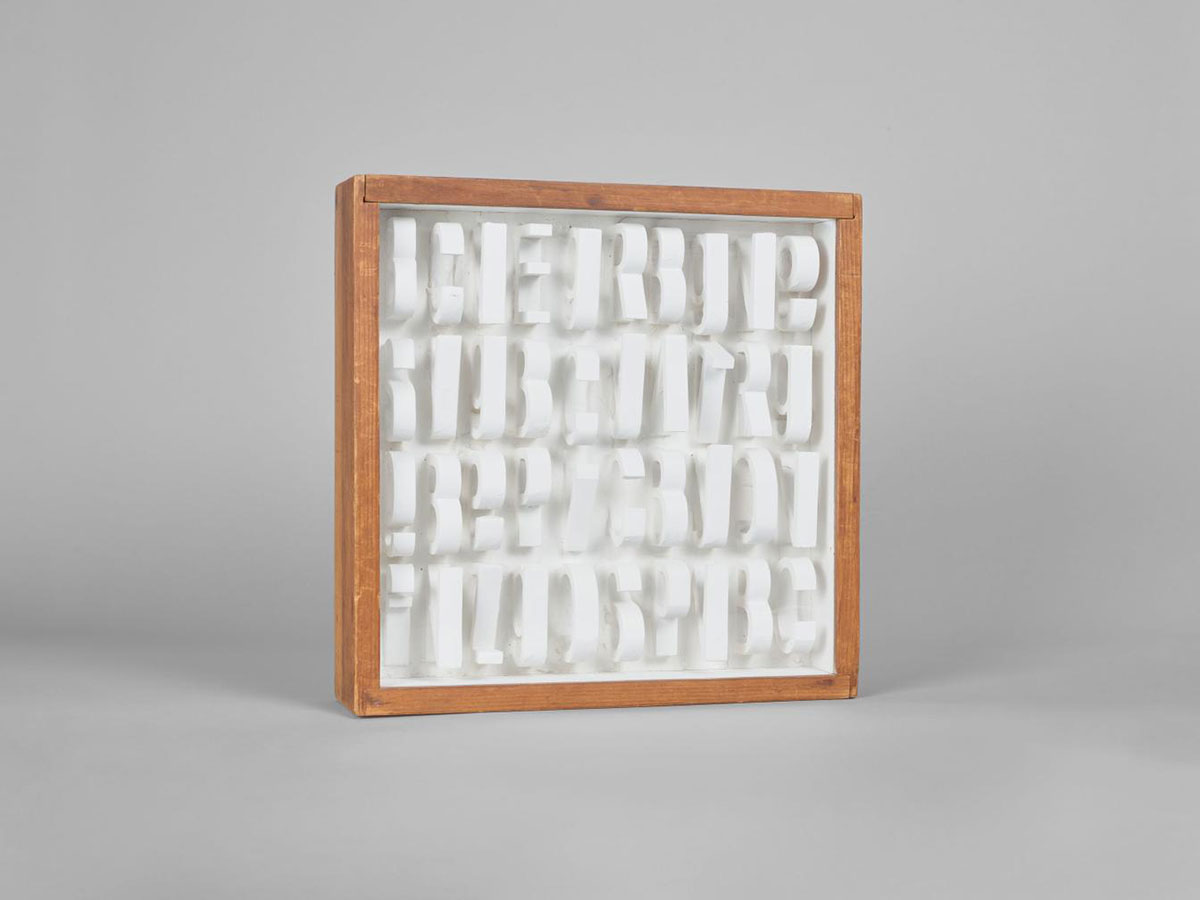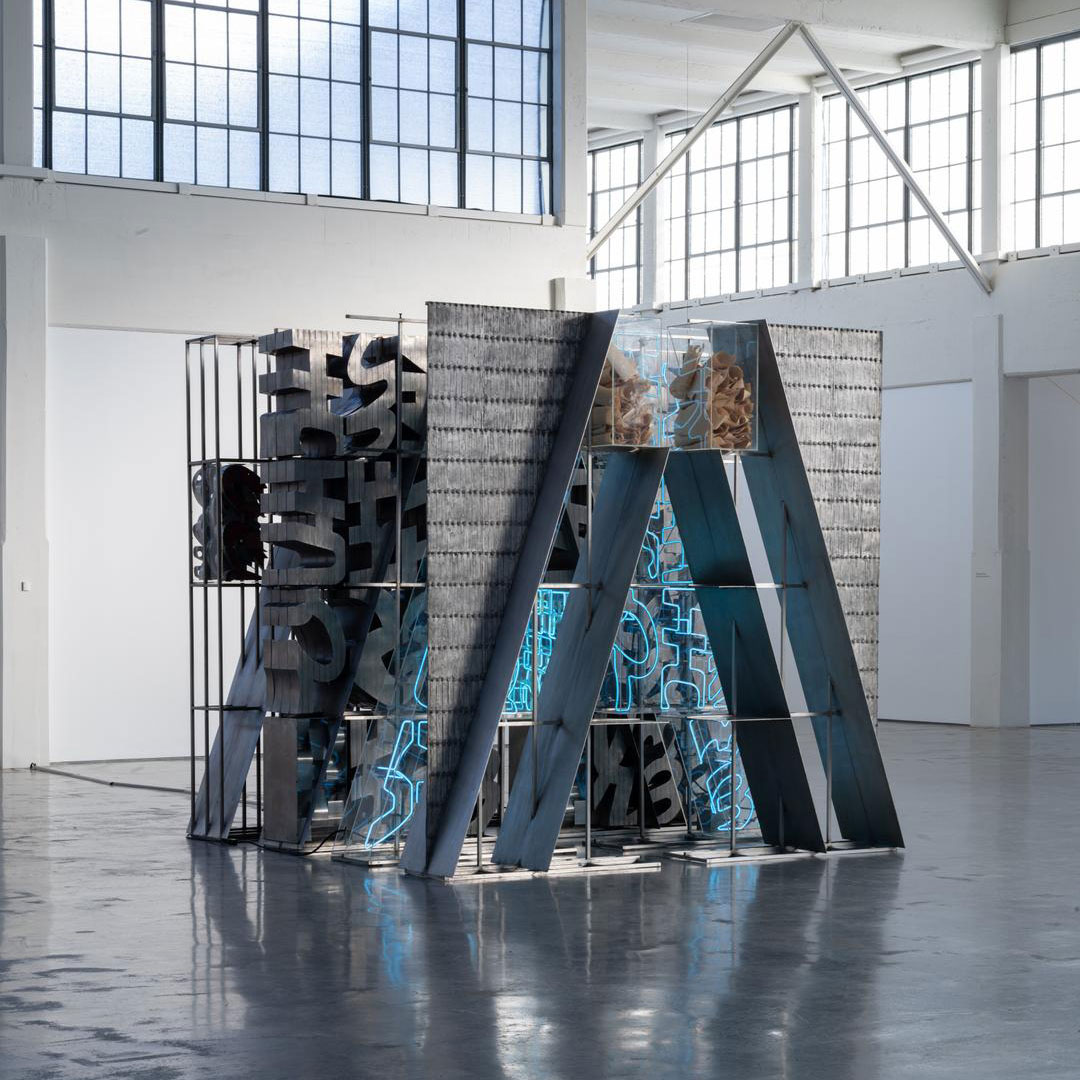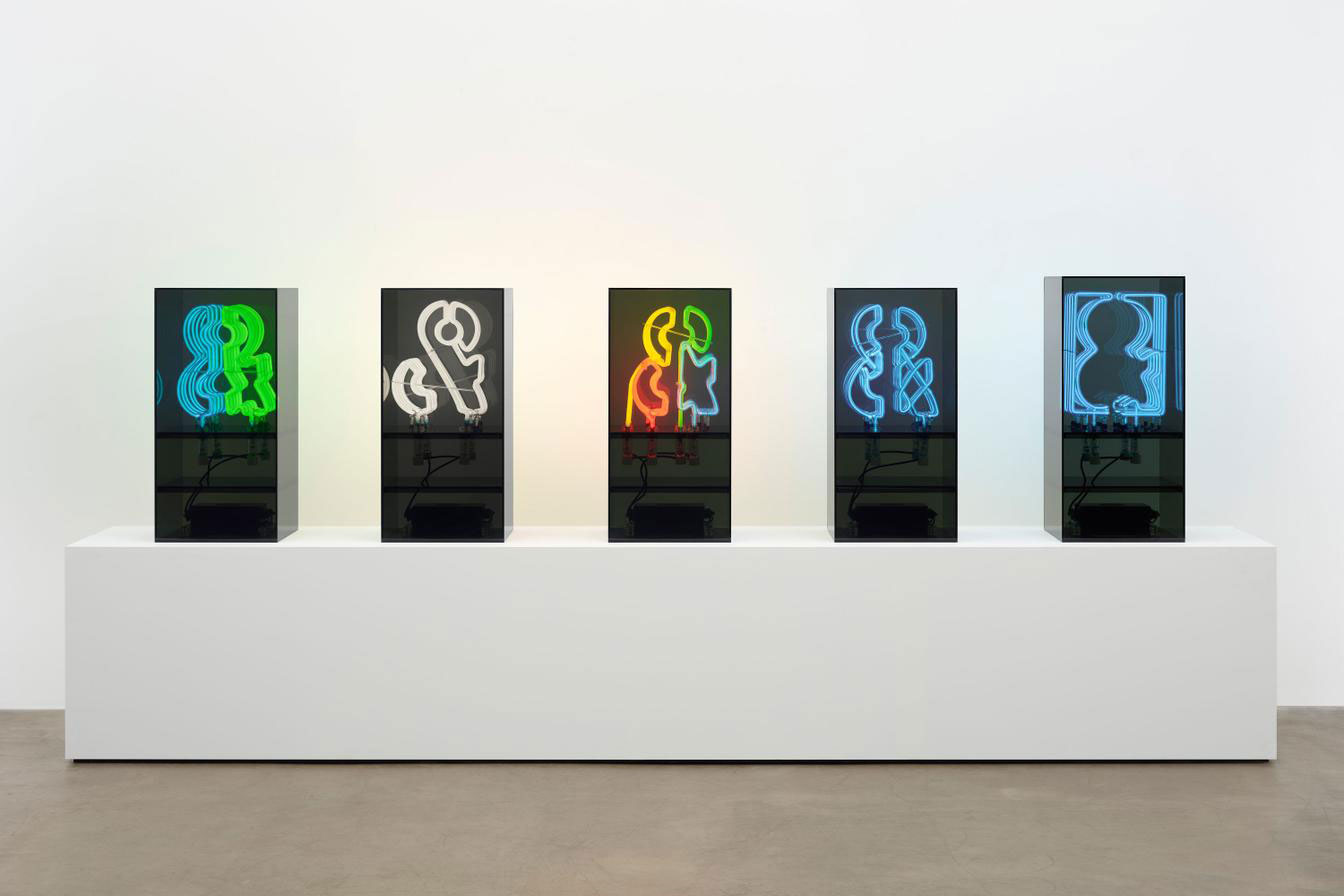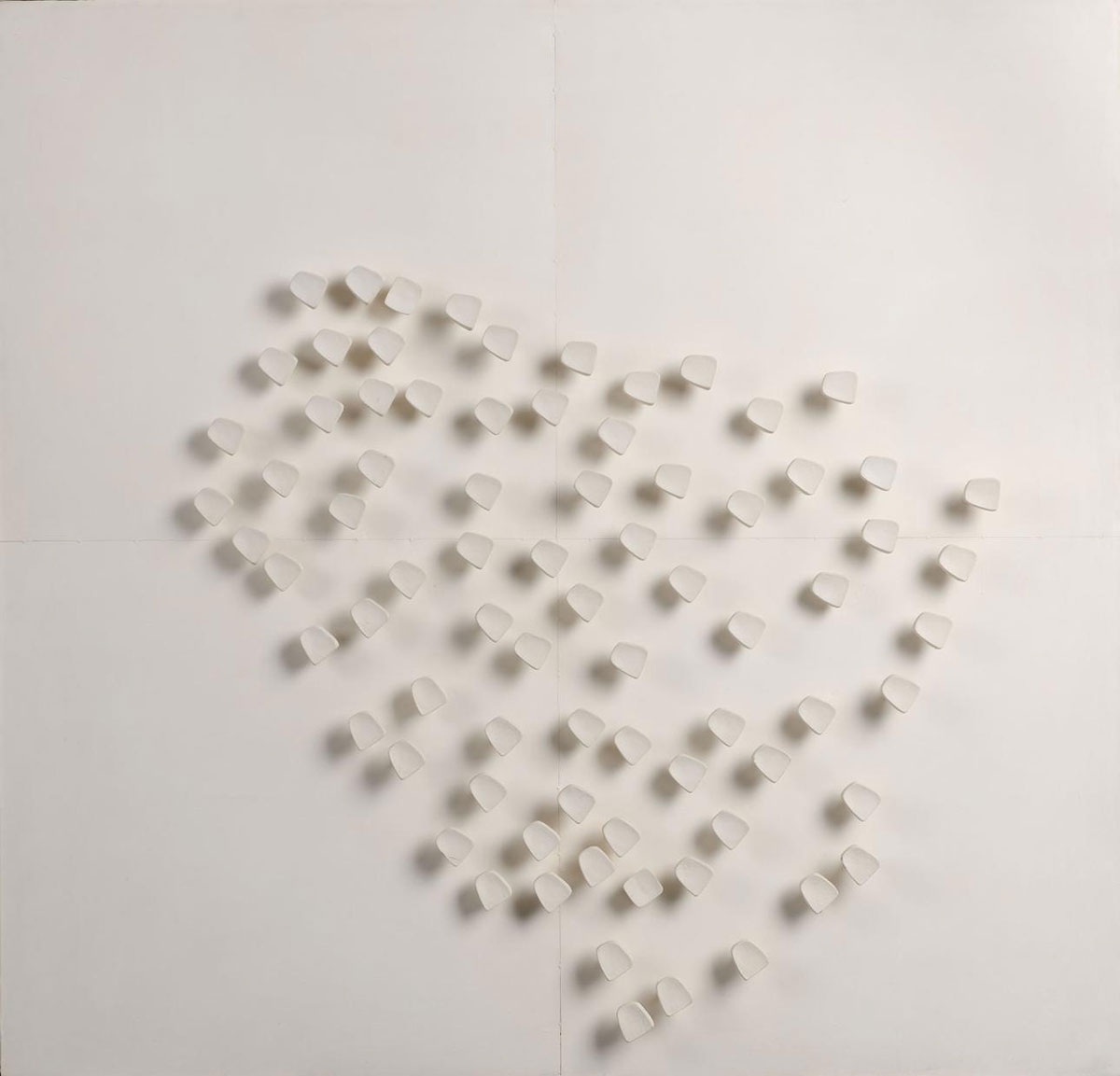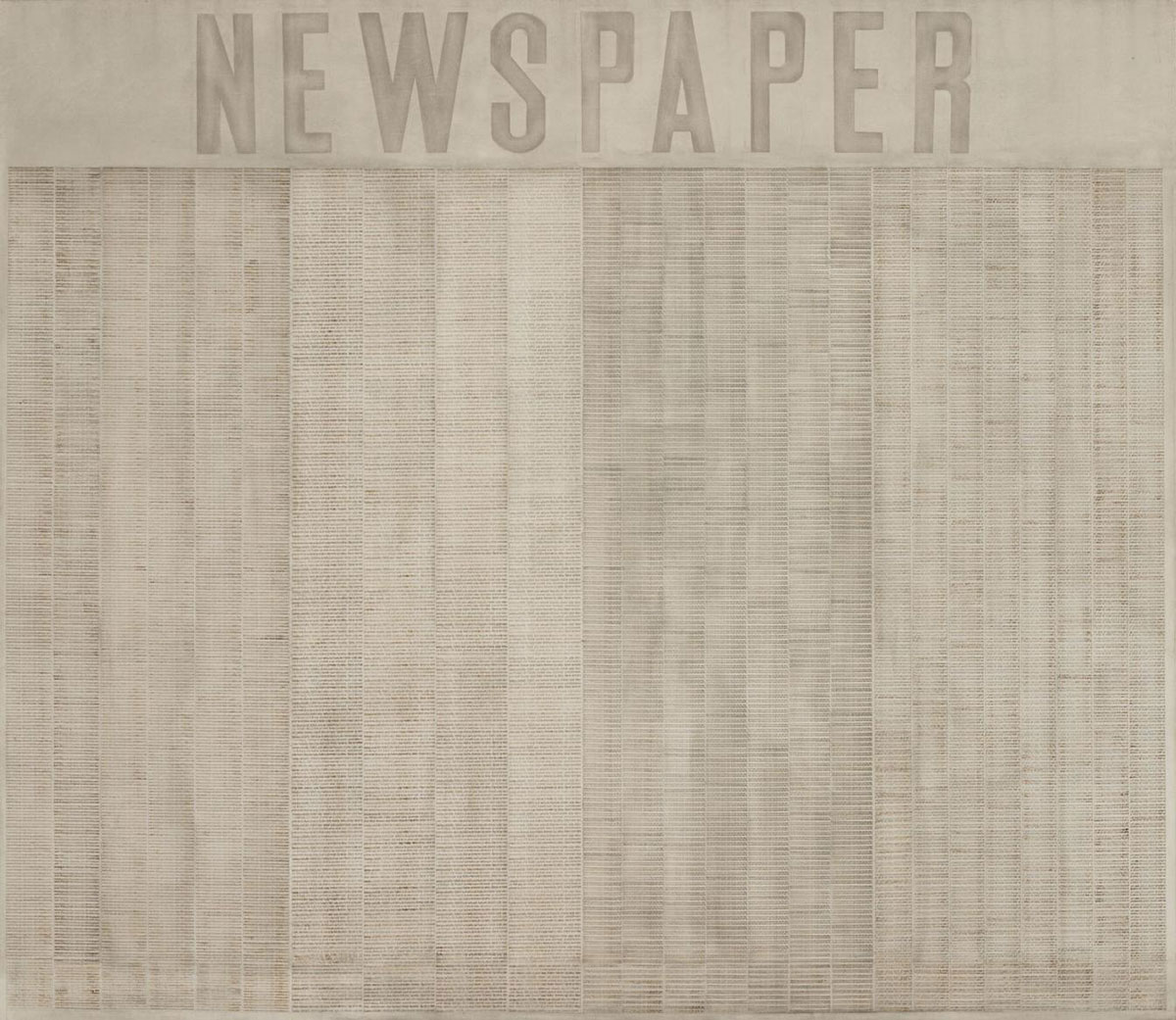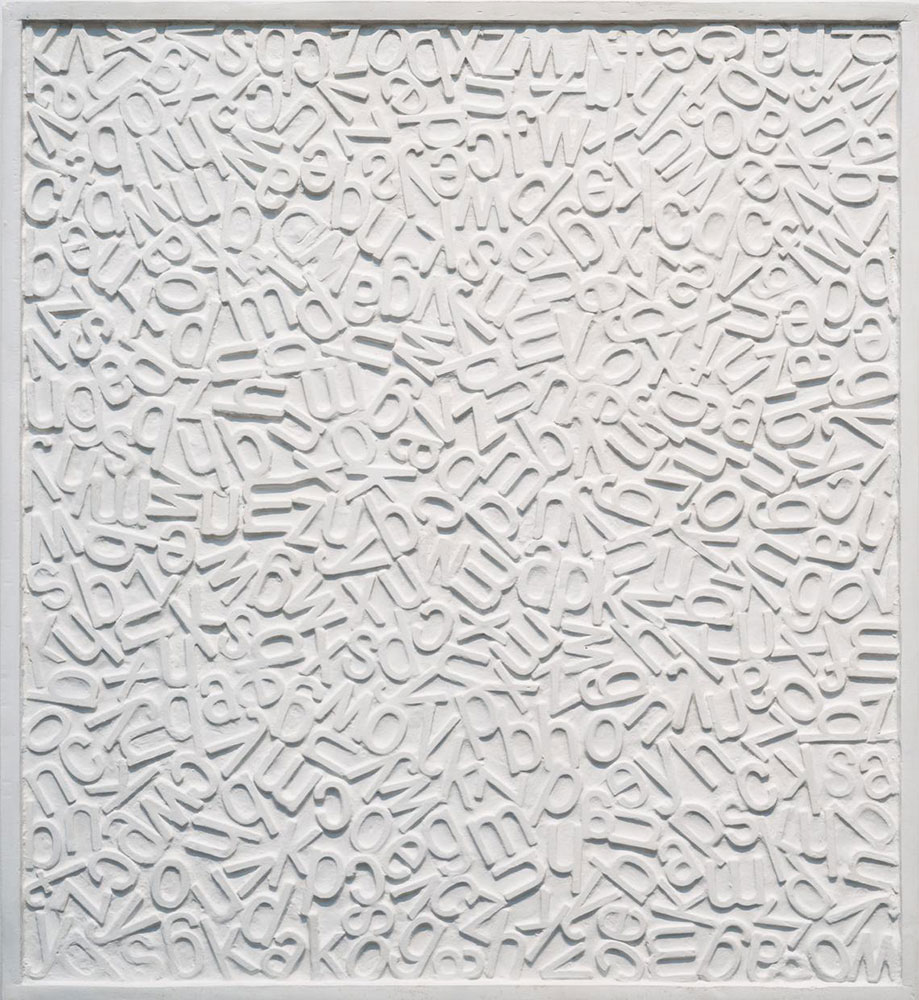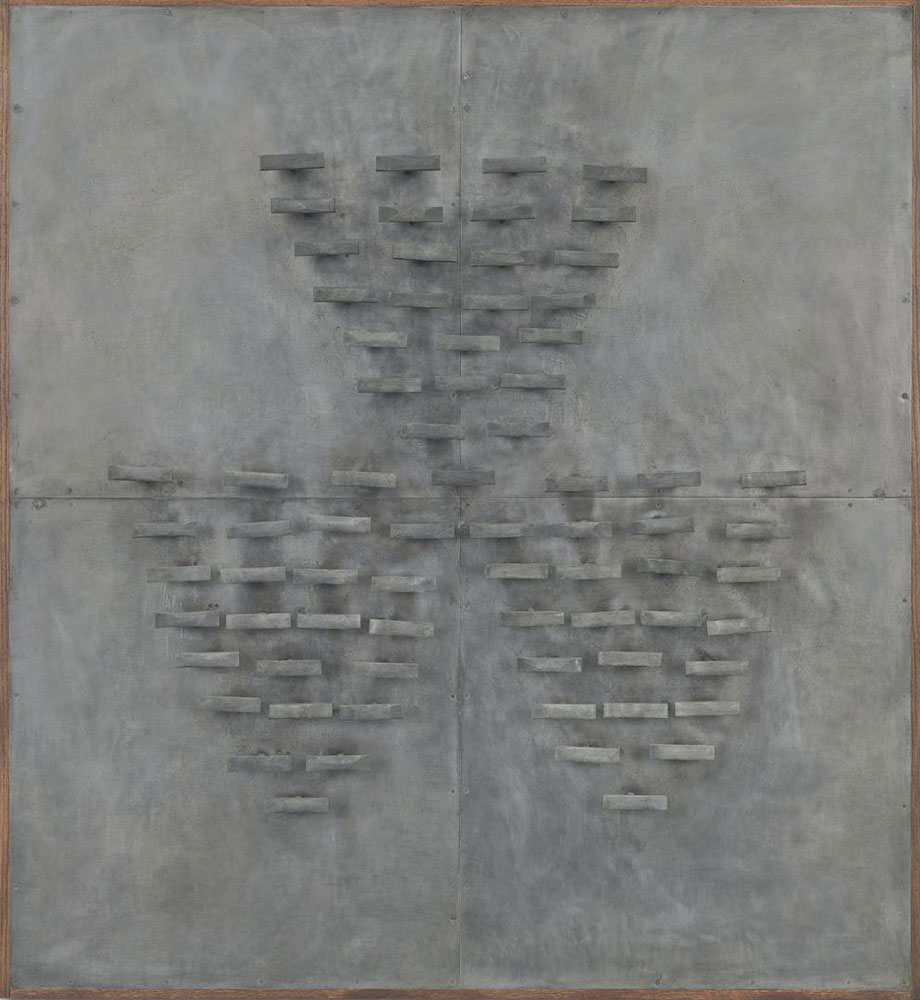PRESENTATION: Chryssa-Chryssa & New York
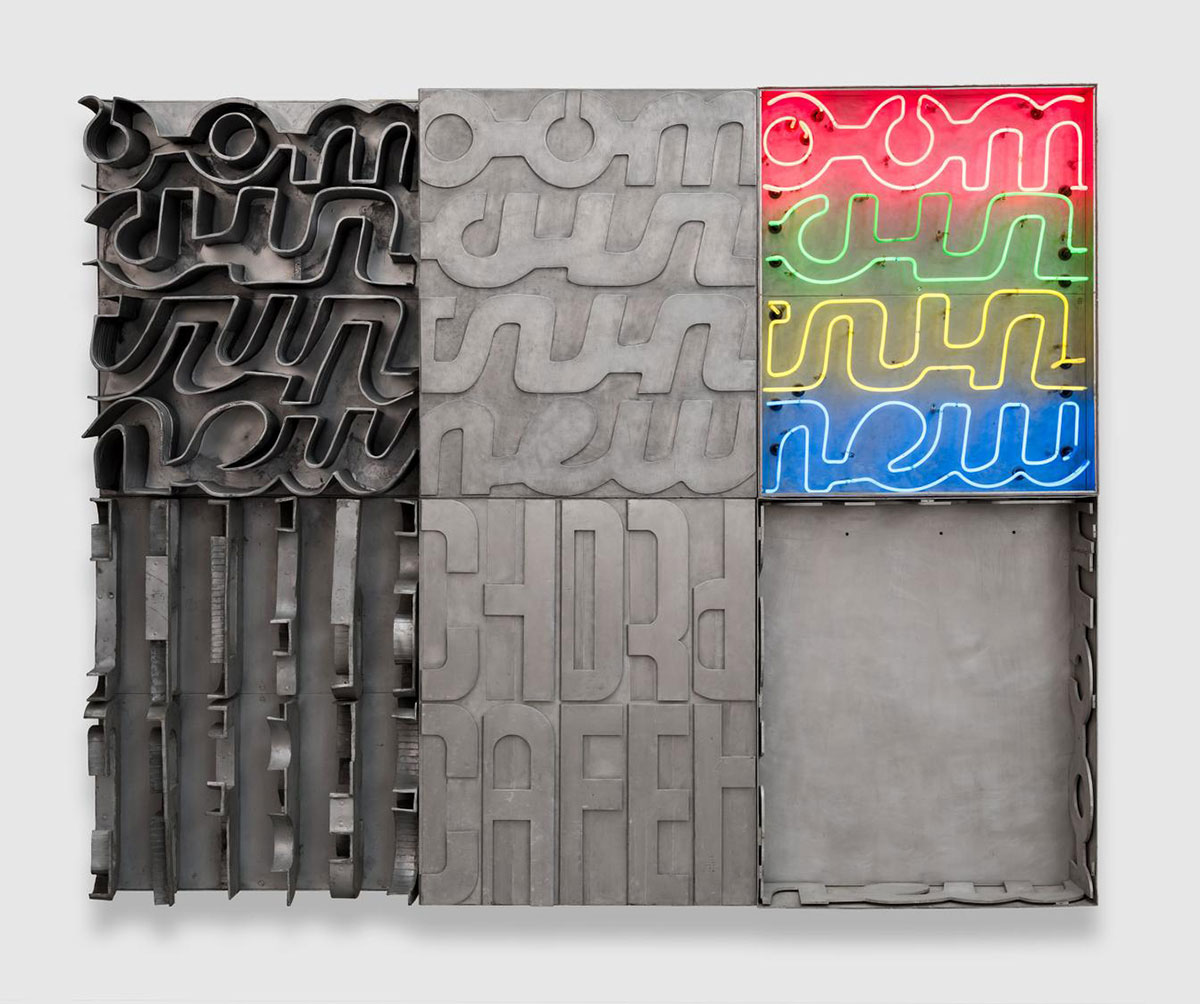 Chryssa Vardea-Mavromichali was a Greek-born American sculptor best known for her monumental assemblages combining neon, bronze, aluminium, plaster, wood, canvas and paint as well as found objects, which prefigured both pop art and minimalism. Vardea studied in Paris and San Francisco, and in 1955 moved to New York, finding inspiration in the spectacle of the advertising neon signs of Times Square.
Chryssa Vardea-Mavromichali was a Greek-born American sculptor best known for her monumental assemblages combining neon, bronze, aluminium, plaster, wood, canvas and paint as well as found objects, which prefigured both pop art and minimalism. Vardea studied in Paris and San Francisco, and in 1955 moved to New York, finding inspiration in the spectacle of the advertising neon signs of Times Square.
By Efi Michalarou
Photo: Menil Collection Archive
From the late 1950s to the early 1970s, while living in New York City, Chryssa made sculptural works composed of lights, letters, and symbols. The exhibition “Chryssa & New York” traces the artist’s innovative use of industrial fabrication methods and materials, including neon, welded metal, and cast aluminum. Taking inspiration from commercial advertisements and illuminated signage, Chryssa captured the energy of New York’s urban land-scape and the rapid shifts in the United States’ social, cultural, and artistic climates that followed World War II. Chryssa was interested in the way language dominated the city, and in the late 1950s she began to salvage letters from sign “graveyards.” Working with professional metal fabricators, she assembled three-dimensional pieces of text in new ways, often entangling the letters in abstract compositions. “Americanoom” (1963), and “Times Square Sky” (1962), are examples of how Chryssa combined industrial refuse with a pioneering use of neon light as fine art. In New York City, Times Square was the epicenter of neon. For Chryssa, an émigré artist, Times Square’s dazzling cacophony of electric light, people, and traffic represented a bright new world of artistic possibilities in her adopted city, and she was dedicated to making art that embodied its spirit and spectacle. Her fascination with the famous intersection culminated with “The Gates to Times Square” (1964–66). This massive sculpture takes the form of a capital A. Some scholars associate her use of the letter with the first letter of the alphabet or of America. The shape also recalls ancient Greek stone portals. Chryssa’s modern version of a passageway, with a narrow alleyway bifurcating the sculpture, comprises a vast assortment of materials and techniques arranged in four freestanding vertical layers. There is a row of cast aluminum with a pattern of bolts and a grid of metal scaffolding reminiscent of the supporting structures of Times Square signs. Rolled-up pieces of paper, originally templates for metal-cutting processes, are encased in a transparent box mounted at the top of the work. Chryssa made multiple neon studies related to “The Gates”. For these works, she shaped brightly colored neon tubes into letter- like symbols and placed them in acrylic sheet boxes. She wanted the glow of the neon pulsing through the darkened plastic to mimic the behavior of urban light at night. She derived the shapes for her neon “letters” from old industrial signs that she found and reworked into new forms and characters. She incorporated this invented language of symbols and characters into the final iteration of “The Gates”. Chryssa understood light as an expressive medium akin to a stroke of paint. She experimented with black light and manipulated the sequencing of the flashing neon in her sculptures. In “Study for the Gates #15” (1967), a vertical stack of eight tubes lights up progressively at six-second intervals to express, according to the artist, “the upward movement of a flight of birds”. In addition to using artificial illumination, Chryssa also made a series of works that harness the effects of sunlight. She called these “experiments with static light” or Projections. They feature protruding white or metallic pegs organized in configurations of signs, letters, or abstract shapes. Some of the tablet-like reliefs and boxes consist of three-dimensional letters that are intention-ally hard to decipher and only become clear when viewers stand in unexpected vantage spots. During this time, Chryssa was part of a vibrant artistic community around the Coenties Slip, a neighborhood at the lower tip of Manhattan. Along with artists Agnes Martin and Ellsworth Kelly, Chryssa explored new approaches to abstraction and its relation-ship to nature and light, as demonstrated by the Cycladic Books. In this series of tablets, she intended the flat blank “pages” to be inscribed with passing natural light. Chryssa first made these works by pouring plaster into cardboard boxes. The boxes’ hori-ontal and vertical seams created ridges and flat planes in the set material. She later replicated these forms in marble and terracotta. The unadorned works reminded her of Cycladic figures she encountered in her native Greece. She was deeply influenced by these early Bronze Age works, and she occasionally placed them alongside her modern reinterpretations in exhibitions. In this presentation, examples of Cycladic sculpture from the Menil’s permanent collection are shown adjacent to Chryssa’s works to draw out this connection. The exhibition concludes with the “Newspapers”, a series of works she made with discarded newspaper linotype printing plates, beginning in 1958. After applying ink and paint to the found plates, Chryssa stamped them in precise grids across paper or canvas. The resulting compositions are filled with weather reports, cross word puzzles, and advertisements for automobile tires. The series’ commercial process and subject matter predate what became known in the early 1960s as Pop Art. At the time, Chryssa was considered a leading artist of her generation.
Photo: Chryssa, Americanoom, 1963. Aluminum, steel, stainless steel, and neon, 90 × 108 in. (228.6 × 274.3 cm). Collection Lowe Art Museum; Gift of Mr. and Mrs. Aron B. Katz. © The Estate of Chryssa, National Museum of Contemporary Art Athens. Image courtesy Lowe Art Museum at the University of Miami. Photo: Oriol Tarridas
Info: Curators: Michelle White and Megan Holly Witko, Menil Collection, 1533 Sul Ross St, Houston, TX, USA, Duration: 29/9/2023-10/3/2024, Days & Hours: Wed-Sun 11:00-19:00, https://www.menil.org/
